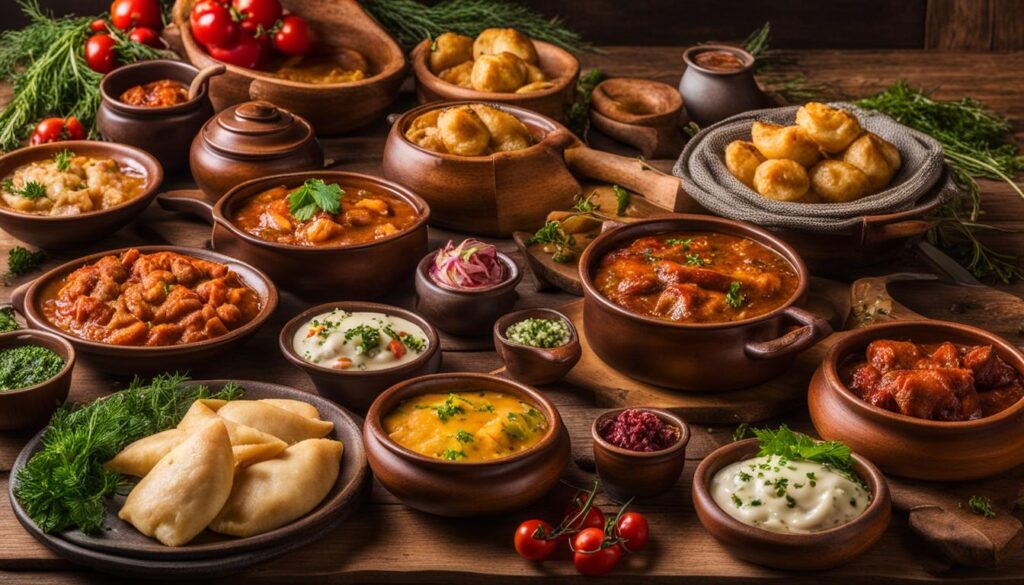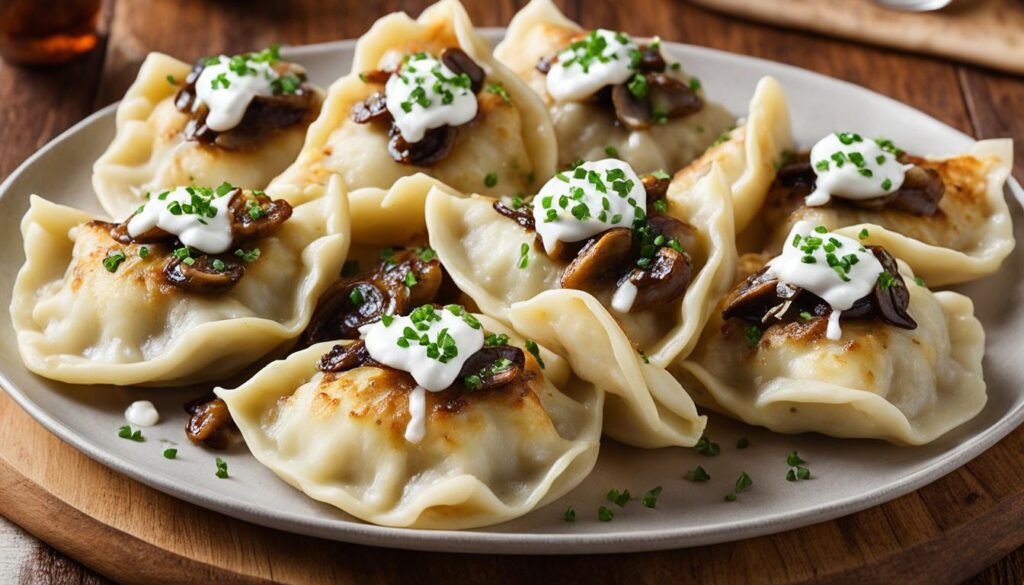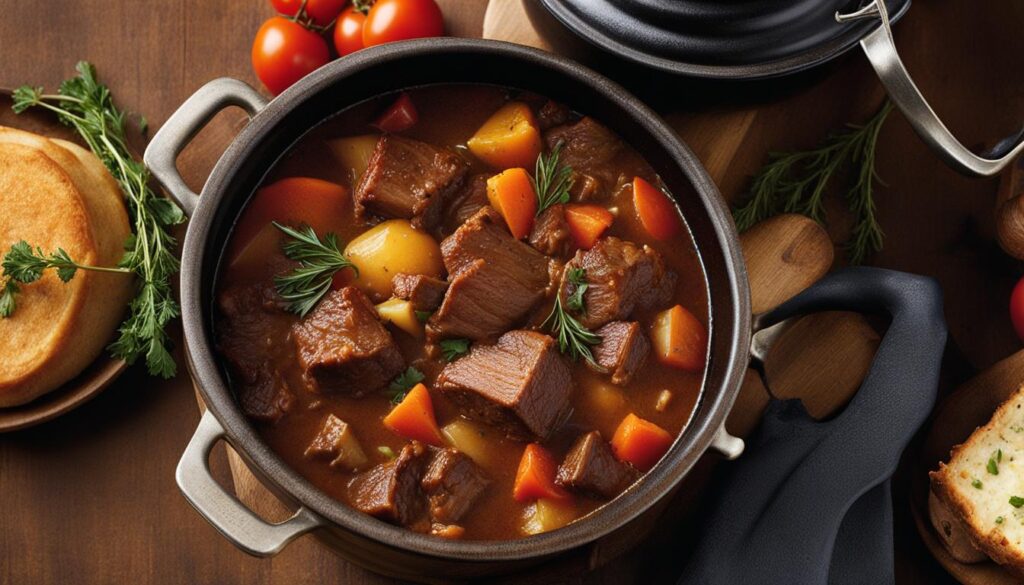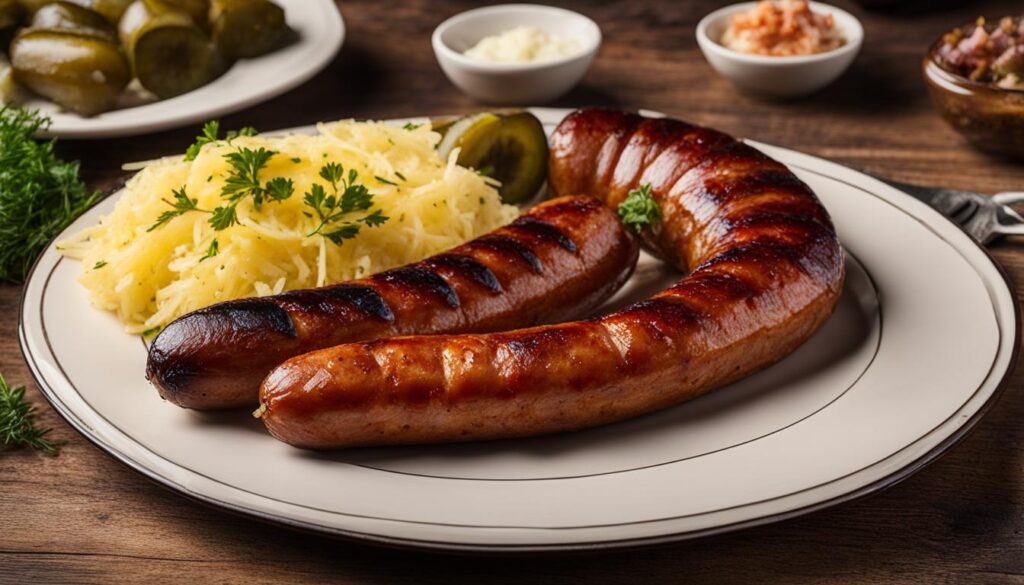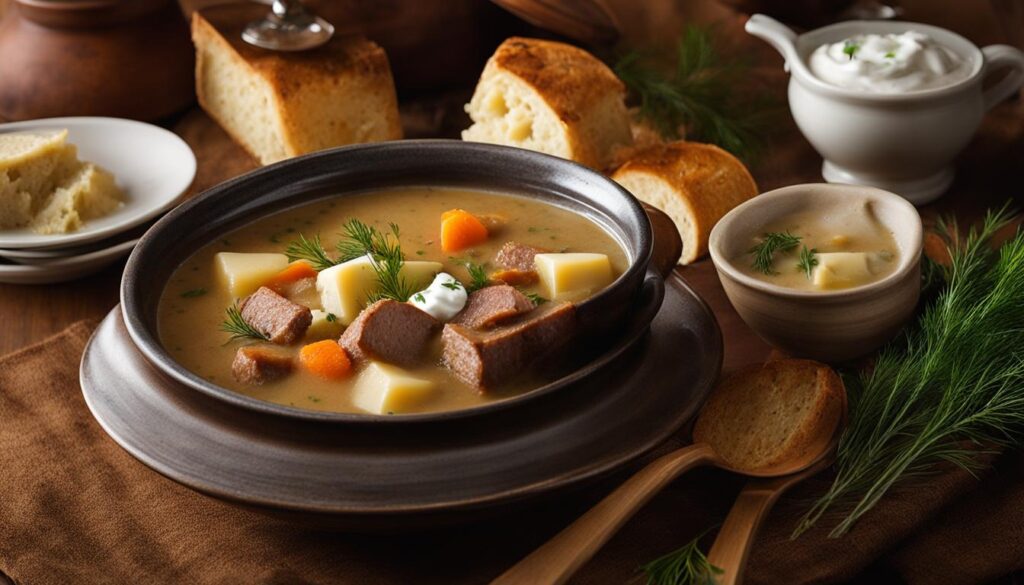If you’re looking to indulge in some of the world’s most delicious cuisine, look no further than Poland. With its unique flavors and hearty dishes, Polish cuisine is a must-try for any food lover visiting the country. In this article, we’ll introduce you to the best local foods to try in Poland to give you an authentic taste of Polish cuisine. From traditional pierogi to savory bigos, kielbasa to golabki, these dishes are sure to tantalize your taste buds.
Get ready to explore the gastronomic delights of Poland and discover what makes this country’s cuisine so special. Whether you’re a seasoned foodie or simply looking to discover new flavors, Polish cuisine offers a culinary experience like no other. So, dive in and savor the delicious and authentic Polish food during your visit to this vibrant and captivating country.
Traditional Polish Cuisine
When it comes to food in Poland, traditional Polish dishes are a must-try. The country’s cuisine is steeped in history and a reflection of its unique cultural heritage. From famous Polish dishes like pierogi to lesser-known delicacies, exploring traditional Polish cuisine is an unforgettable culinary experience.
Some popular traditional Polish dishes that you should try during your visit include:
| Traditional Polish Dish | Description |
|---|---|
| Pierogi | A type of Polish dumpling that can be filled with various ingredients, such as meat, cheese, and potatoes. Often served with sour cream or fried onions. |
| Bigos | A stew made with meat, sauerkraut, and vegetables. Also known as Polish Hunter’s Stew. |
| Kielbasa | A type of Polish sausage that can be served boiled, smoked, or grilled. Kielbasa is often made with pork, beef, and/or veal and can be flavored with garlic, paprika, and other spices. |
| Zurek | A Polish sour rye soup that is often served with sausage and hard-boiled eggs. The sourness comes from the fermented rye flour used to make the soup. |
| Golabki | Stuffed cabbage rolls that are typically filled with a mixture of meat and rice. |
| Makowiec | A sweet yeast dessert that features a filling of poppy seed paste and raisins. |
These famous Polish dishes are just the beginning of what traditional Polish cuisine has to offer. During your visit, be sure to explore the many regional variations and unique twists on these classic dishes for an unforgettable culinary experience.
Pierogi: Polish Dumplings
Pierogi are a classic Polish dish that has become a beloved staple around the world. These delicious dumplings come in a variety of shapes and sizes, with different savory or sweet fillings. Pierogi are traditionally served boiled or fried, and sometimes baked, and they are a must-try when visiting Poland.
There are countless types of pierogi to choose from, including meat, cheese, and potato fillings, as well as sweet options like blueberries, strawberries, and chocolate. Polish dumplings are typically garnished with butter, sour cream, fried onions, or bacon bits, depending on the filling.
Pierogi are often made using traditional family recipes passed down through generations or found in local restaurants. Making pierogi from scratch is an art form that requires patience and precision. The dough is rolled thin and cut into circles, then stuffed with the filling and pinched shut to form a half-moon shape. It’s a labor of love that results in a comforting and flavorful dish.
Ordering pierogi in Poland is easy, and you can find this local delicacy in most Polish restaurants and cafes. The versatility of pierogi makes them suitable as a main course, side dish, or even a snack. Polish dumplings have become popular worldwide, and there’s no better place to try them than in their country of origin.
Bigos: Polish Hunter’s Stew
When it comes to gastronomic delights in Poland, it’s hard to top bigos, a hearty stew that is a staple in Polish cuisine. Bigos, also known as Polish hunter’s stew, is a dish made with sauerkraut, meat, and various vegetables. The recipe for bigos dates back centuries, and it has become a symbol of Polish culinary heritage.
The origins of bigos can be traced back to hunters who would prepare the dish while out in the forest. The recipe evolved over time and became popular among the wider population, and today it is often served in homes and restaurants throughout Poland.
The ingredients in bigos vary depending on the recipe, but typically include pork, beef, sausage, bacon, mushrooms, onions, and a variety of spices. The sauerkraut gives the stew a tangy flavor, while the meat and vegetables add depth and heartiness.
Traditionally, bigos is cooked for several hours, allowing the flavors to meld together and the meat to become tender and juicy. It is usually served hot, accompanied by bread or potatoes.
This flavorful stew is a favorite among locals and is a must-try for anyone visiting Poland. Be sure to add bigos to your list of must-eat foods during your culinary journey through this captivating country.
Kielbasa: Polish Sausage
Are you a fan of sausages? Then get ready to savor the taste of Kielbasa, a popular Polish sausage that is enjoyed in various forms and flavors. Coming in several types, from smoked to boiled, Kielbasa is a versatile ingredient used in many Polish dishes. The word “kielbasa” is Polish for sausage, so it is a catch-all term that actually refers to many different varieties of sausage.
Traditionally served at holidays and special events, Kielbasa is a significant part of Polish cuisine. This mouth-watering sausage is made from pork, beef, or veal, and flavored with garlic and other spices that give it a distinct taste.
So, if you want to sample the true taste of Poland, be sure to try Kielbasa. Whether you prefer it smoked or boiled, you’re sure to enjoy this iconic Polish food.
Types of Kielbasa
There are different types of Kielbasa, such as:
| Type of Kielbasa | Description |
|---|---|
| Krakowska | A thick sausage seasoned with garlic and smoked over hardwood. |
| Wiejska | A rustic sausage with a coarser texture, typically flavored with marjoram, allspice, and garlic. |
| Weselna | A type of Kielbasa that is commonly served at weddings or other celebrations. |
Pro tip: Kielbasa can be enjoyed on its own or used as an ingredient in dishes like pierogi, bigos, and cabbage rolls.
Zurek: Polish Sour Rye Soup
When it comes to local delicacies in Poland, zurek is a must-try. This traditional soup is made with fermented rye flour and served with sausage and hard-boiled eggs. The sour taste comes from the fermentation process, which gives the soup a unique tangy flavor that pairs perfectly with the richness of the sausage and eggs.
If you’re curious about experiencing the authentic taste of Polish sour rye soup, you can easily find it at local restaurants and cafes throughout the country. Zurek is a beloved dish in Poland and can even be found at street food vendors.
A bowl of zurek is a perfect way to warm up on a chilly evening or to enjoy a comforting lunch on a rainy day. Don’t miss out on the chance to try this delicious and traditional Polish specialty.
Golabki: Stuffed Cabbage Rolls
Golabki, also known as stuffed cabbage rolls, are an essential dish in Polish cuisine that you can’t miss out on during your visit to Poland. This traditional dish is made by filling boiled cabbage leaves with a mix of meat and rice, creating a delicious and hearty meal that is perfect for cold winter days.
Originally, golabki were considered a festive dish and were only served on special occasions such as weddings or religious holidays. Nowadays, they are a beloved comfort food that can be found in many restaurants throughout Poland, and each region has its unique variation of the recipe.
Aside from the traditional beef and rice version, golabki can also be made with pork, veal, or turkey, and there are vegetarian options available too. Different regions also add their unique touch to the dish, with some using tomato sauce instead of sour cream or boiling the rolls in broth instead of baking them.
No matter how it’s prepared, golabki is a testament to the creativity and versatility of Polish cuisine, and a must-try for anyone looking to experience the rich flavors of traditional Polish dishes.
Makowiec: Poppy Seed Roll
If you’re in search of sweet treats, look no further than makowiec. This traditional Polish dessert is a must-try for anyone with a sweet tooth. Makowiec possesses a sweet yeast dough that is rolled out and then filled with a rich and flavorful poppy seed paste. The poppy seed filling is prepared with a combination of honey, sugar, and ground poppy seeds, which is then flavored with lemon zest or almonds.
Many Poles grew up eating makowiec during the holiday season, making it an essential part of any Christmas or Easter feast. Move over cupcakes, donuts, and brownies – it’s time to indulge in something new and uniquely Polish.
Ingredients:
- For the dough: flour, sugar, butter, eggs, milk, yeast
- For the filling: poppy seeds, honey, sugar, lemon zest or almonds
Instructions:
- Start by preparing the dough and allowing it to rise for at least an hour.
- In a separate bowl, mix the poppy seed filling ingredients until well combined.
- Roll out the dough, spread the filling, and then roll it up lengthwise.
- Bake the roll in the oven until golden brown and let it cool before slicing and serving.
Makowiec is perfect for those who love soft, sweet, and delicate pastries. With its unique flavors and classic appearance, this dessert is sure to impress anyone who tries it. So go ahead and indulge in the sweet taste of Poland.
Conclusion
Congratulations! You have now explored the top Polish dishes that should be on your must-try list during your visit to Poland. Polish cuisine offers a unique and flavorful experience that will delight your taste buds. Whether you’re into savory pierogi or hearty bigos, spicy kielbasa or tangy zurek, or sweet makowiec, there’s something for everyone to enjoy in Polish cuisine.
Don’t miss out on the opportunity to savor the gastronomic delights that Poland has to offer. Step outside your comfort zone and sample the local delicacies that showcase the country’s rich culinary heritage. You’ll create lasting memories of your culinary journey through this captivating country and be able to share your experience with others.
So the next time you’re planning a trip to Poland, make sure to add these traditional Polish dishes to your itinerary and indulge in the unique flavors that await you.






























